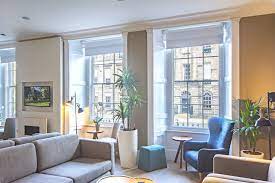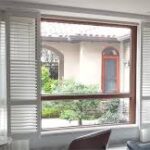Modern living in busy cities often comes with unavoidable challenges, such as noise pollution, energy inefficiency, and inconsistent indoor temperatures. Homes and offices are increasingly affected by external sounds, drafts, and rising heating costs, which can make daily life less comfortable. Secondary glazing offers an effective solution to these issues, allowing residents and businesses to maintain a serene and energy-efficient environment without necessitating major structural alterations.
We will explore how this solution provides tangible benefits for a wide range of properties. By adding an extra layer of glazing, individuals can enjoy quieter, warmer, and more secure interiors while also reducing energy consumption and minimizing environmental impact. A skilled glazier ensures careful installation, allowing secondary glazing to significantly improve comfort while preserving the aesthetics and character of any building.
Reducing Noise and Enhancing Peace
One of the most immediate benefits of secondary glazing is its ability to reduce external noise. Urban environments expose residents to constant traffic, construction, and other city sounds that disrupt concentration, relaxation, and even sleep. Secondary glazing creates an additional barrier that absorbs and reduces sound transmission, resulting in a noticeable decrease in indoor noise levels. This is particularly valuable for bedrooms, home offices, or living areas where quiet is essential.
Unlike traditional soundproofing methods that may require extensive renovations, secondary glazing can achieve significant improvements with minimal disruption. By installing a well-fitted secondary window, it is possible to create a calm and peaceful interior, regardless of the bustling environment outside. This solution allows homeowners to enjoy a quieter, more productive, and more relaxing living space.
Improving Energy Efficiency and Temperature Control
Beyond acoustic benefits, secondary glazing also enhances thermal performance, providing significant energy efficiency gains. Many older properties, particularly those with single-glazed windows, experience significant heat loss during the winter months, leading to drafts and uneven indoor temperatures. Adding a secondary layer of glazing helps retain heat, creating a more stable and comfortable environment throughout the property. This reduces reliance on heating systems, helping to lower energy bills and minimize environmental impact.
In warmer months, the extra layer can also help maintain a cooler interior by reducing heat penetration. The overall result is a consistent and comfortable indoor climate that supports daily life and well-being. Secondary glazing is an effective way to make energy efficiency improvements without replacing original windows or altering the property’s exterior appearance.
Security, Durability, and Long-Term Value
Secondary glazing also contributes to enhanced security and durability. Adding another layer of glass makes it more difficult for intruders to access a property, increasing safety for residents and their belongings. Additionally, it reduces condensation on the interior surfaces of windows, protecting frames from moisture-related damage and extending their lifespan. This is particularly useful for older buildings, where maintaining original windows is crucial for preserving their architectural character.
The reversible nature of secondary glazing makes maintenance and cleaning simple, and installations can be tailored to fit a wide range of window types, including sash, casement, bay, and arched windows. By addressing noise, temperature, security, and structural longevity simultaneously, secondary glazing represents a practical and long-term investment in comfort and property value.
In addition to its practical benefits, secondary glazing can also enhance a property’s aesthetic appeal. Well-designed units integrate seamlessly with existing window frames, maintaining the building’s visual integrity while delivering enhanced performance. This makes secondary glazing suitable for a variety of settings, from modern apartments to historic properties. The solution is discreet and often nearly invisible once installed, preserving both the original design and natural light. For property owners who prioritize comfort without compromising style, secondary glazing provides a functional yet visually unobtrusive enhancement. Furthermore, it supports sustainable practices by reducing energy consumption, contributing to a smaller carbon footprint, and aligning with environmentally conscious living.
The installation of secondary glazing is a practical and cost-effective way to enhance a property’s comfort without undertaking major renovations. Unlike full window replacements, secondary glazing can be installed relatively quickly, minimizing disruption to daily life. Professional installers assess each property’s requirements and tailor the glazing to suit specific needs, ensuring optimal performance in terms of sound reduction, thermal efficiency, and security.
High-quality installations are designed to last, providing long-term benefits with minimal maintenance. The combination of durability, adaptability, and ease of use makes secondary glazing a solution that adds measurable value to both residential and commercial properties. Property owners often find that the improvements are immediate and continue to deliver benefits for years to come.
Secondary glazing offers a transformative solution for modern homes and offices. It addresses noise, heat loss, energy inefficiency, and security concerns while enhancing both comfort and aesthetic appeal. By improving insulation, reducing energy consumption, and maintaining visual integrity, secondary glazing provides tangible, long-lasting benefits for a wide range of properties. With minimal disruption during installation and flexible design options, it represents a practical investment in comfort, well-being, and environmental responsibility. This makes secondary glazing a smart choice for anyone looking to enhance their indoor environment without compromising style or structure.



